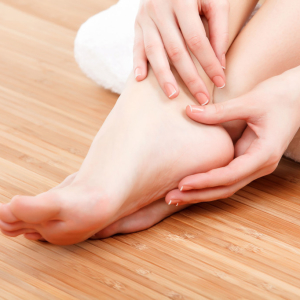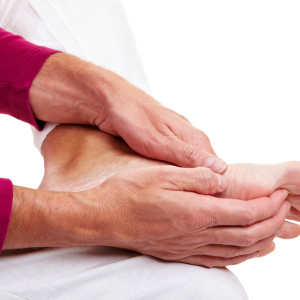The heel spur or plantar fasci is the inflammatory disease of the plantar fascia, which is characterized by the formation of bone outflow in the fastening zone of heel tendons. One of the popular methods of treating this disease is laser therapy.
Causes of plantar fasci
This disease is manifested by the presence of pain in the heel area, which occurs or amplified even with minor loads.
Planted fasciys are more susceptible to women after 40 years. His appearance provoke the following factors:
- overweight;
- diseases of the joints of the lower extremities;
- the omit for the longitudinal and transverse stories of the foot;
- problems with the spine;
- metabolism disorder;
- gout;
- foot injuries;
- increased legs on the feet;
- complications after transferring infectious diseases.
For diagnosis, a specialist is enough to analyze the patient's complaints and conduct a physical inspection. To clarify the presence of heel spurs, radiography can be assigned.
Purpose of a laser for the treatment of spurs
Low-intensity laser therapy is used with a wide range of various diseases. Typically, this method is beginning to use when conservative treatments have not brought the result. The light beam of a certain wavelength is sent by the laser apparatus on the affected area. In this case, enzymes are activated, which are necessary for the body to start and accelerating biochemical processes.
The laser beam provides the following effect on the damaged area:
- suppresses an inflammatory reaction;
- removes pain and swelling;
- relaxes muscle tissue;
- causes the death of pathogenic microorganisms;
- reduces the sensitivity of nerve centers from the effects of irritants;
- stimulates the activation of phagocytes when calcium ions in the cell enter;
- restores fascia cells and tendons.
As a result, the expansion of capillaries, connective tissue cells are activated, blood circulation is stimulated, there is a pronounced therapeutic effect.
Advantages of the method and contraindications
Laser treatment compares favorably with other methods by the following features:
- it does not cause allergies;
- painless treatment;
- no side effects;
- not addictive;
- enhances the action of drugs;
- it helps to speed up recovery.
Despite the safety of laser treatment, there are a number of diseases in which this therapy is not recommended:
- respiratory and heart failure Grade 3-4;
- benign and malignant tumors;
- hyperthyroidism;
- diabetes, third degree.
What algorithm laser treatment nizkointensivnym
The first stage comprises 10 daily treatment procedures laser exposure. The light beam power of 80 mW is adapted to the frequency range of 50 Hz. Then, a break is made in two weeks, and in the course of 10 treatments was repeated, increasing the frequency of exposure to 80 Hz. If necessary, it can be assigned to the third treatment, the laser power and frequency of impact when it is increased to 90 mW and 600 Hz, respectively.
In the presence of heel spurs large diameter, lower intensity therapy relieve pain and inflammation, but do not eliminate the problem. In severe cases it is necessary to divide the calcium in the calcaneus.
Shock-wave laser therapy
This method relates to the surgical treatment of the disease. He is appointed, if tried other lighter options for therapy. The essence of the method - in the destruction of bone outgrowth local influence of high-frequency sound wave energy. Treatment is carried out in 7 sessions with an interval of 4 days. The interval between treatments can be increased depending on the patient. Through palpation the doctor finds pain localization and field data provides exposure to high-energy wave.
The method of removal of the heel outgrowth by shock-wave laser therapy - a good alternative to surgery.
Laser therapy - an effective tool to combat the heel spur. But it should be understood that the laser treatment eliminates the problem but does not eliminate the cause of the disease. Together with your doctor to find out what triggered the development of the disease, and eliminate triggers. Otherwise possible recurrence plantar fasciitis.



































